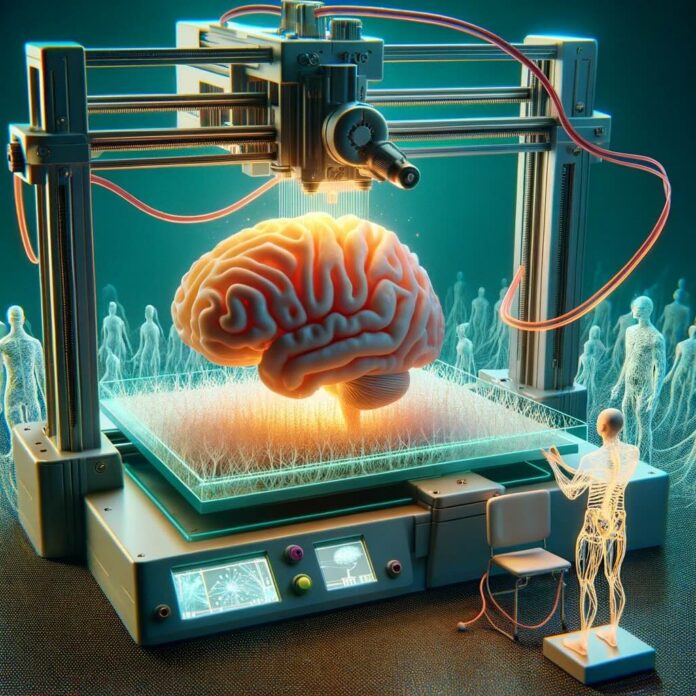In a groundbreaking advancement that could revolutionize the study of neurological disorders, a team of researchers from the University of Wisconsin-Madison has successfully created the first functional 3D-printed brain tissue. Published in the prestigious journal “Cell Stem Cell”, this development marks a significant leap forward in neuroscience, offering new avenues for exploring the complexities of the human brain and its diseases.
The innovative research, led by Professor Su-Chun Zhang of neuroscience and neurology at UW–Madison’s Waisman Center, utilized a novel horizontal 3D printing technique. This method, contrasting with traditional vertical layer stacking, uses a softer bio-ink gel that allows neurons to intertwine and form connections, mirroring the intricate networks found within the human brain.
Professor Zhang highlighted the potential of this breakthrough, stating, “This could be a hugely powerful model to help us understand how brain cells and parts of the brain communicate in humans.” The implications of such technology are vast, ranging from deepening our understanding of stem cell biology and neuroscience to providing new insights into the pathogenesis of various neurological and psychiatric disorders, including Alzheimer’s and Parkinson’s disease.
The 3D-printed brain tissue exhibits remarkable functionality, with neurons actively communicating through neurotransmitters, akin to natural brain processes. This achievement was made possible by maintaining the tissue’s thinness to ensure optimal nutrient and oxygen intake, facilitating the growth and interconnection of neurons.
Moreover, the precision of this 3D printing approach allows for control over the arrangement and types of cells, offering a more accurate model for brain studies compared to traditional brain organoids. “We printed the cerebral cortex and the striatum, and what we found was quite striking,” Zhang added, emphasizing the special and specific manner in which different brain cells could communicate.
This pioneering research not only showcases the potential of 3D printing in creating complex biological tissues but also opens up new pathways for drug testing, understanding the wiring of human neural networks, and modeling pathological processes. As the world continues to seek solutions for neurological conditions affecting millions globally, the development of functional 3D-printed brain tissue stands as a beacon of hope and innovation in the quest to unravel the mysteries of the human brain.
Sources include: Interesting Engineering
